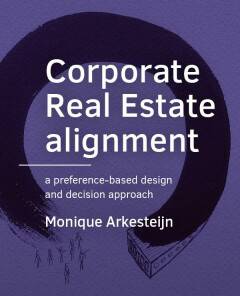
- Retrait gratuit dans votre magasin Club
- 7.000.000 titres dans notre catalogue
- Payer en toute sécurité
- Toujours un magasin près de chez vous
- Retrait gratuit dans votre magasin Club
- 7.000.000 titres dans notre catalogue
- Payer en toute sécurité
- Toujours un magasin près de chez vous
29,95 €
+ 59 points
Description
One of the long-standing issues in corporate real estate (CRE) management is the alignment of an organization’s real estate to its corporate strategy. In the last thirty years, fourteen CRE alignment models have been developed. In these models the objective is to become ‘more aligned’ and in some of them the target is maximum or optimum added value. Extensive research into these models provided valuable insights into building blocks, components and variables that are needed in the alignment process. But these models fall short in two ways. Most models pay little to no attention (1) to the design of new CRE portfolios and (2) to the selection of a new CRE portfolio that adds most value to the organization.
With the development of a new approach, the Preference-based Accommodation Strategy design and decision approach (PAS), this research addresses the deficiencies of previous alignment models that either place too much emphasis on financial measures or lack clarity in decision making due to the difficulties of quantifying the intangible and subjective. The main research question is: How can the PAS design and decision approach successfully be developed and used on corporate real estate portfolio level in order to enhance CRE alignment?
The originality of this research lies in two main novelties. Firstly, by defining value as technically equivalent to preference. Secondly, by using a design and decision approach for the alignment problem. The applied Preference-Based Design procedure enables stakeholders to design and select alternative CRE portfolios. By doing so, stakeholders are able to determine the added value of new CRE portfolios. PAS is tested successfully and evaluated positively in three pilot studies.
With the development of a new approach, the Preference-based Accommodation Strategy design and decision approach (PAS), this research addresses the deficiencies of previous alignment models that either place too much emphasis on financial measures or lack clarity in decision making due to the difficulties of quantifying the intangible and subjective. The main research question is: How can the PAS design and decision approach successfully be developed and used on corporate real estate portfolio level in order to enhance CRE alignment?
The originality of this research lies in two main novelties. Firstly, by defining value as technically equivalent to preference. Secondly, by using a design and decision approach for the alignment problem. The applied Preference-Based Design procedure enables stakeholders to design and select alternative CRE portfolios. By doing so, stakeholders are able to determine the added value of new CRE portfolios. PAS is tested successfully and evaluated positively in three pilot studies.
Spécifications
Parties prenantes
- Auteur(s) :
- Editeur:
Contenu
- Nombre de pages :
- 408
- Langue:
- Anglais
- Collection :
Caractéristiques
- EAN:
- 9789463662260
- Date de parution :
- 28-11-19
- Format:
- Livre broché
- Dimensions :
- 190 mm x 235 mm
- Poids :
- 939 g







